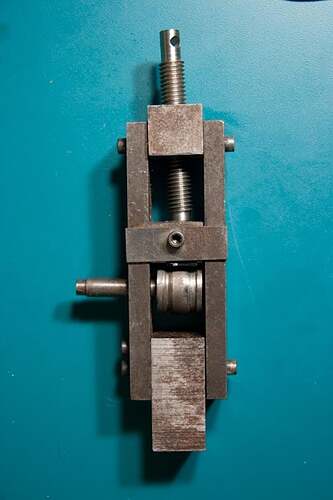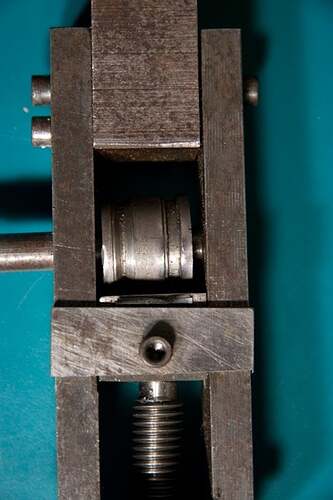One thing I wonder about is whether I can make do with aluminum
rollers to deform the silver or whether I should use the iron for
rollers and the aluminum for the gearing?
You’ve got to be kidding, right? aluminum will deform as quickly,
maybe even quicker, than the silver. You’re rolls need to be STEEL.
Not soft iron or cast iron, or brass or aluminum or cardboard. Steel.
Preferably capable of being heat treated. You did say you want to
make foil, right? That takes nicely flat rolls that won’t deform
under pressure. And for the rest of the rolling mill, well, steel or
heavier cast iron for the frame, and steel for the gearing. Aluminum
gears will never hold up. Probably wouldn’t hold up past the first
day of use. Bearings for the rollers can be brass or bronze if you
like. Even with your proposed tiny pieces of metal, you’d be
surprised at the loads your little mill will need to handle. Thus,
steel is the required metal for most of it.
Frankly, Andrew, making your own rolling mill isn’t going to be as
easy as you think. To work at all well, even with small pieces of
metal, it has to be fairly well engineered and made of decent metal.
Rolls need to be very round and concentric with the bearing surfaces.
That needs a high quality lathe, not a CNC benchtop mill. Even better
would be centerless grinding after the lathe work is done. You might
be able to have a local machine shop help you with this.
But frankly, I wouldn’t bother. High quality mills are indeed costly
tools that need some saving up for and earn pride of ownership once
you’ve got them. But you can get reasonably cheap mills. Frei and
Borel has a cheap one for less than 300. Harbor Freight sells an
even cheaper (in all senses of the word) mill for a bit over 250, if
I recall right.) All of these will get most of what you wish done.
Yes, this is still some money to spend. But it’s less than the value
of the time you’ll spend trying to build one yourself, not to mention
the cost of hair replacement treatments you’ll also need if you try
to build your own judging from the level of equipment you’ve got
available, and your apparent limited understanding of the
engineering requirements for a rolling mill indicated in your post.
Now, if even these prices are too much, and you really only need to
mill metal an 1/8 inch wide, then you’ve got another option. Not
great, but it might work. You can get a tool made to enlarge stone
set rings that basically is a micro rolling mill intended for
rolling the metal in a ring shank. These usually come with a set of
various profile shapes for different shank profiles, but can also
handle flat shanks. Generally limited to about 1/4 inch wide or so.
Some resemble a sort of micrometer handle mounted to a base, with the
handle adjusting the rolling pressure. Another I’ve seen actually
looks a bit like a small rolling mill, with rolls on one side and
hand crank on the other side of the base. This sort of mimics the
costly Kagen ring roller, but for vastly less money. Check ebay. The
cheapest of these little tools can be found for less than 40 dollars
or so. And they actually are sometimes useful for more than
stretching ring shanks, such as for producing various profiles of
wire.
Hope that helps.
Peter Rowe

